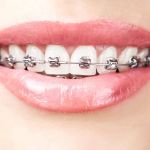
Effective Treatment for Cavities in Teeth with Fillings
- Why Cavities Develop Under Fillings
- Signs You Might Have a Cavity in a Filled Tooth
- Treatment Options for Cavities in Filled Teeth
- How to Prevent Cavities Under Fillings
- When to See a Dentist for a Filled Tooth
1. Why Cavities Develop Under Fillings
Many people believe that once a tooth is filled, it’s protected forever. However, cavities can still develop under or around dental fillings due to several factors.
Filling Wear and Tear
Over time, fillings can wear down, crack, or become loose, allowing bacteria to seep underneath and cause new decay. This is especially common in older silver amalgam fillings.
Poor Oral Hygiene
Even with a filling, plaque and bacteria can accumulate around the edges of the restoration, leading to decay if proper brushing and flossing habits are not maintained.
Gaps Between Filling and Tooth
As fillings age, tiny gaps can form between the filling material and the tooth structure. These spaces create perfect hiding spots for bacteria, increasing the risk of cavities.
2. Signs You Might Have a Cavity in a Filled Tooth
Detecting a cavity under a filling can be tricky, but there are key symptoms to watch out for.
Increased Tooth Sensitivity
If you notice sensitivity to hot, cold, or sweet foods, it could be a sign that decay is forming under your filling.
Tooth Pain or Discomfort
A persistent, dull ache or sharp pain when chewing might indicate that a cavity is developing under your filling.
Visible Dark Spots or Cracks
Dark discoloration, cracks, or gaps around the filling can suggest that bacteria have entered the area and caused further decay.
Bad Taste or Bad Breath
If you experience a lingering bad taste or persistent bad breath, it could be due to bacteria trapped under a damaged filling.
3. Treatment Options for Cavities in Filled Teeth
The right treatment for a cavity in a filled tooth depends on the severity of the decay and the condition of the existing filling.
Filling Replacement
If decay is caught early, your dentist may simply remove the old filling, clean out the cavity, and place a new filling.
Dental Crown
For more extensive decay, a crown may be required to cover and protect the remaining tooth structure after removing the damaged area.
Root Canal Treatment
If the decay has reached the tooth's pulp, a root canal may be necessary to remove the infected tissue and preserve the tooth.
Tooth Extraction (Last Resort)
In severe cases where the tooth is too damaged to be saved, extraction may be the only option. A dental implant or bridge can replace the missing tooth.
4. How to Prevent Cavities Under Fillings
Prevention is key to maintaining the health of your filled teeth and avoiding further cavities.
Maintain Excellent Oral Hygiene
Brush twice a day with fluoride toothpaste, floss daily, and use an antibacterial mouthwash to reduce plaque buildup.
Regular Dental Checkups
Visit your dentist every six months for professional cleanings and exams to catch potential issues early.
Avoid Sugary and Acidic Foods
Reducing your intake of sugary and acidic foods helps prevent bacteria from breaking down your tooth enamel.
Consider Sealants or Fluoride Treatments
Your dentist may recommend sealants or fluoride treatments to provide extra protection against decay.
5. When to See a Dentist for a Filled Tooth
If you experience pain, sensitivity, or notice any changes in your filled tooth, schedule a dental appointment immediately. Early intervention can save your tooth and prevent more costly treatments down the road.
Taking proper care of your fillings and overall oral health can keep your teeth strong and cavity-free. If you suspect a problem with a filled tooth, don't wait—contact your dentist today for an evaluation and personalized treatment plan.







 Cary Dental Rejuvenation4.0 (473 review)
Cary Dental Rejuvenation4.0 (473 review) Mountainside Dental Group - Rancho Santa Margarita4.0 (117 review)
Mountainside Dental Group - Rancho Santa Margarita4.0 (117 review) Dr. Brett H. Loeser, DDS4.0 (47 review)
Dr. Brett H. Loeser, DDS4.0 (47 review) Summer Smile Dental South Gate4.0 (461 review)
Summer Smile Dental South Gate4.0 (461 review) Personal Dental Office & Orthodontics4.0 (228 review)
Personal Dental Office & Orthodontics4.0 (228 review) Duxbury Children's Dentistry4.0 (14 review)
Duxbury Children's Dentistry4.0 (14 review) The Importance of Oral Health Education During Pregnancy for a Healthy Pregnancy
The Importance of Oral Health Education During Pregnancy for a Healthy Pregnancy Best Tips for Brushing Your Teeth Properly for Healthy Gums: Essential Techniques for Oral Health
Best Tips for Brushing Your Teeth Properly for Healthy Gums: Essential Techniques for Oral Health Why Skipping Dental Checkups Can Lead to Bigger Oral Health Problems
Why Skipping Dental Checkups Can Lead to Bigger Oral Health Problems Advantages of Porcelain Dental Restorations
Advantages of Porcelain Dental Restorations How Can Diabetes Cause Tooth and Gum Problems? Preventing and Managing Oral Health Issues
How Can Diabetes Cause Tooth and Gum Problems? Preventing and Managing Oral Health Issues Healthy Habits for Promoting Good Oral Health and Hygiene: Tips for a Healthy Smile
Healthy Habits for Promoting Good Oral Health and Hygiene: Tips for a Healthy Smile